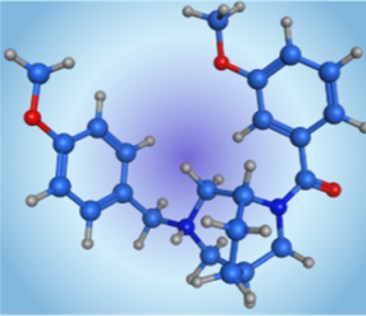Hit Ranking & Clustering
Creative Biolabs is dedicated to developing our intelligent drug discovery and development platform for pharmaceutical research. By combining expertise in drug development and artificial intelligence (AI), we are confident in providing one-stop drug discovery services including hits ranking and clustering to accelerate your drug discovery process.
 Distributed under CC BY-SA 4.0, from Wiki, without modification.
Distributed under CC BY-SA 4.0, from Wiki, without modification.
Overview of Hits Ranking and Clustering
Analyzing small molecule screening data is an important part of the drug discovery pipeline. Cheminformatics tools enable exploration of the structural similarities, physicochemical properties and bioavailability of the hits from primary screening before proceeding further in drug discovery research. Structurally similar compounds tend to share the same or structurally similar targets. Therefore, the hit molecules can be analyzed by clustering based on their chemical fingerprints and structural similarity determining their chemical diversity.
Ranking and Clustering Method
Compared to traditional methods, structure-based drug design is becoming an important tool for faster and more cost-efficient lead discovery. The clustering of small molecules based on the structural similarity has been performed in recent years. There are several approaches used to the clustering of small molecules. Among commonly used methods, the structure-based approaches such as chemical fingerprints have been widely used. These clustering parameters will help in scaffold hopping to compare and prioritize structurally related new lead molecules from random screening approaches.
- Chemical fingerprints are high-dimensional vectors that are commonly used in chemometric analysis and similarity-based virtual screening applications. Generally, chemical fingerprints include 2D binary fingerprints and 3D fingerprints. 2D binary fingerprinting methods can be used for the refinement of hit-lists, in which a specific characteristic appears to be beneficial or unwanted for the biological activity. 3D fingerprints commonly used in 3D-QSAR studies include chemical features based on pharmacophoric patterns, surface properties, molecular volumes of molecular interaction fields.
- To determining the hit ranking and clustering of the hit series, a clustering algorithm is needed. The clustering algorithm is an unsupervised algorithm in which the data set is first divided a predefined distance metric in a high-dimensional space, and then labels are assigned based on the number of observed categories.
Our Expertise
For a specific target, the first step in the drug discovery process is to identify the hit compounds. We have developed platforms based on multiple clustering algorithms that can be used to rank the compounds, cluster the structures, perform basic SAR analysis... On this basis, we offer a variety of automated, efficient, and intelligent drug discovery services to researchers in the drug development field around the world, including:
- Molecule library construction
- Al-based virtual screening
- High accuracy screening
- In vitro binding assay
- Other in vitro and in vivo assays.
Creative Biolabs provides customers with a variety of drug design solutions such as hit identification, hit to lead and lead optimization. Our solutions are capable of generating millions of new candidate compounds for desired targets and accurately predict their properties such as biological activity, target selectivity, etc. If you want to know more, please feel free to contact us.
For Research Use Only.
